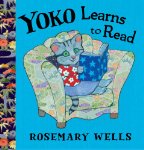Since I moved to America, I have learned about and experienced all kinds of holidays that I did not know about when I was a child. I have celebrated Cinco de Mayo, Halloween, Hanukkah, Diwali, and Chinese New Year with friends and family, and I have greatly enjoyed every single festive occasion. Today's picture book looks at twenty-four holidays from around the world, some of which might be new to you.
Edited by Debjani Chatterjee and Brian D’Arcy
Illustrated by Shirin Adl
Poetry Picture Book
For ages 7 to 10
Frances Lincoln, 2011, 978-1-84780-087-9
There is a good chance that somewhere in the world, at this moment, people are celebrating a festival day. There are so many holidays that many of us have never even heard of, and many that we are aware exist but that we nothing about. For this colorful poetry collection, the editors have selected twenty-nine poems that celebrate a variety of festive days that are celebrated in countries around the world.
We begin by hearing from the dragon who is taking part in a Chinese New Year parade. The dragon tells us about how it dances in the street “on caterpillar feet.” Its red, green and gold scales “shiver,” and though it is fierce looking, it reassures us that “you’ve nothing to fear” from the “King of the Chinese New Year.”
Next we are transported to the United Kingdom, where children and their families celebrate Pancake Day by making pancakes. They make the batter, heat the pan, and pour the batter in. Then it is time to try to toss the pancake. Will the family members soon be “peeling / Pancakes off the kitchen ceiling?”
Later in the book, we encounter the bright paint colors of Holi. Holi is an Indian festival day when people throw colored powder and water on each other. It is joyous day when everyone gets to be a prankster, and when everyone has a reason to be silly. To the sounds of sitars and tablas, people pelt each other with colorful “sparkling powers” and “happy splashes.”
Children and their families are sure to enjoy the pictures and poems in this special book. The poems were written by poets from around the world, and some are modern, while others are older. Most were written in English, but a few were written in other languages and were translated for us.
At the back of the book, readers will find brief explanations of the twenty-four holidays that are mentioned in the book.










